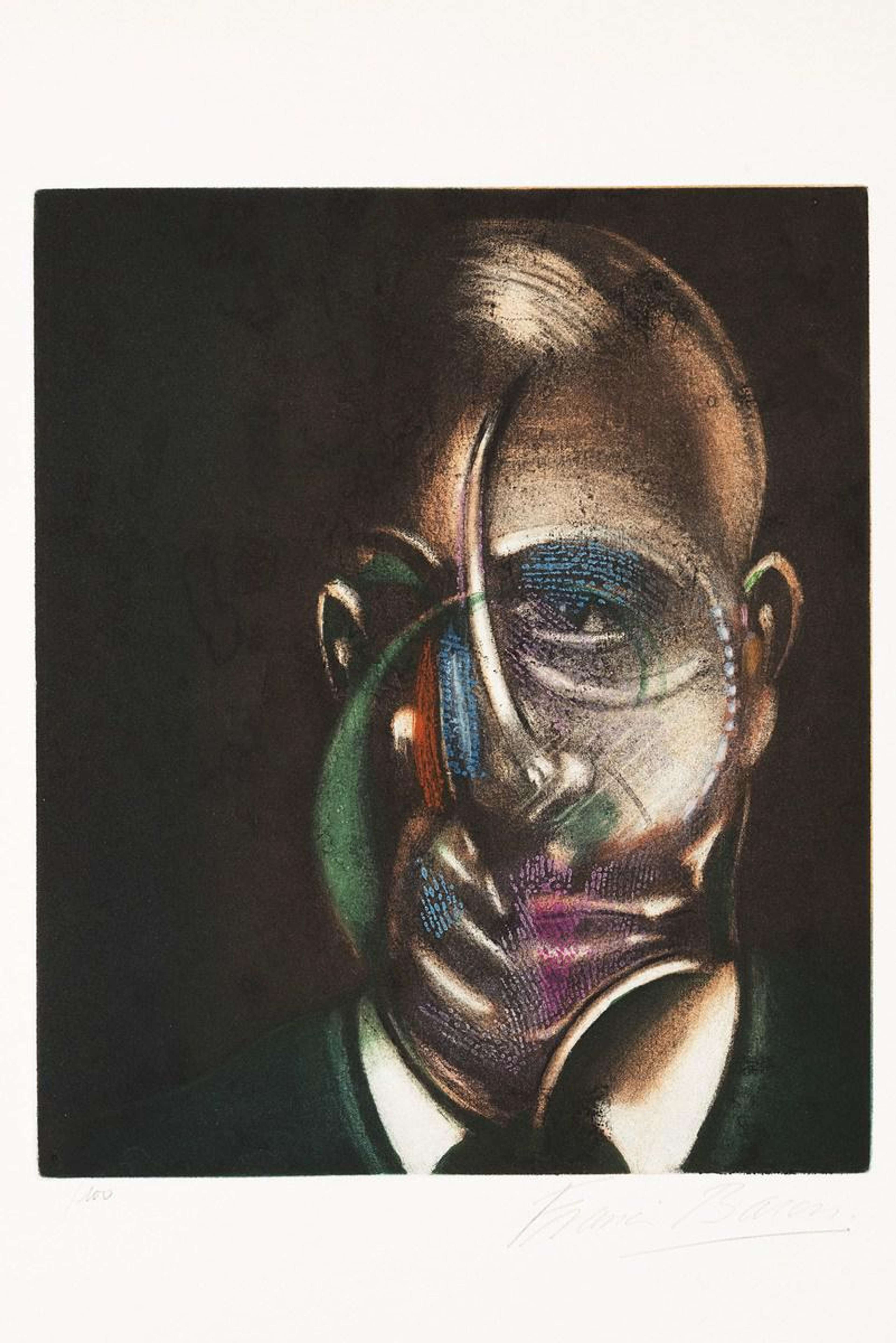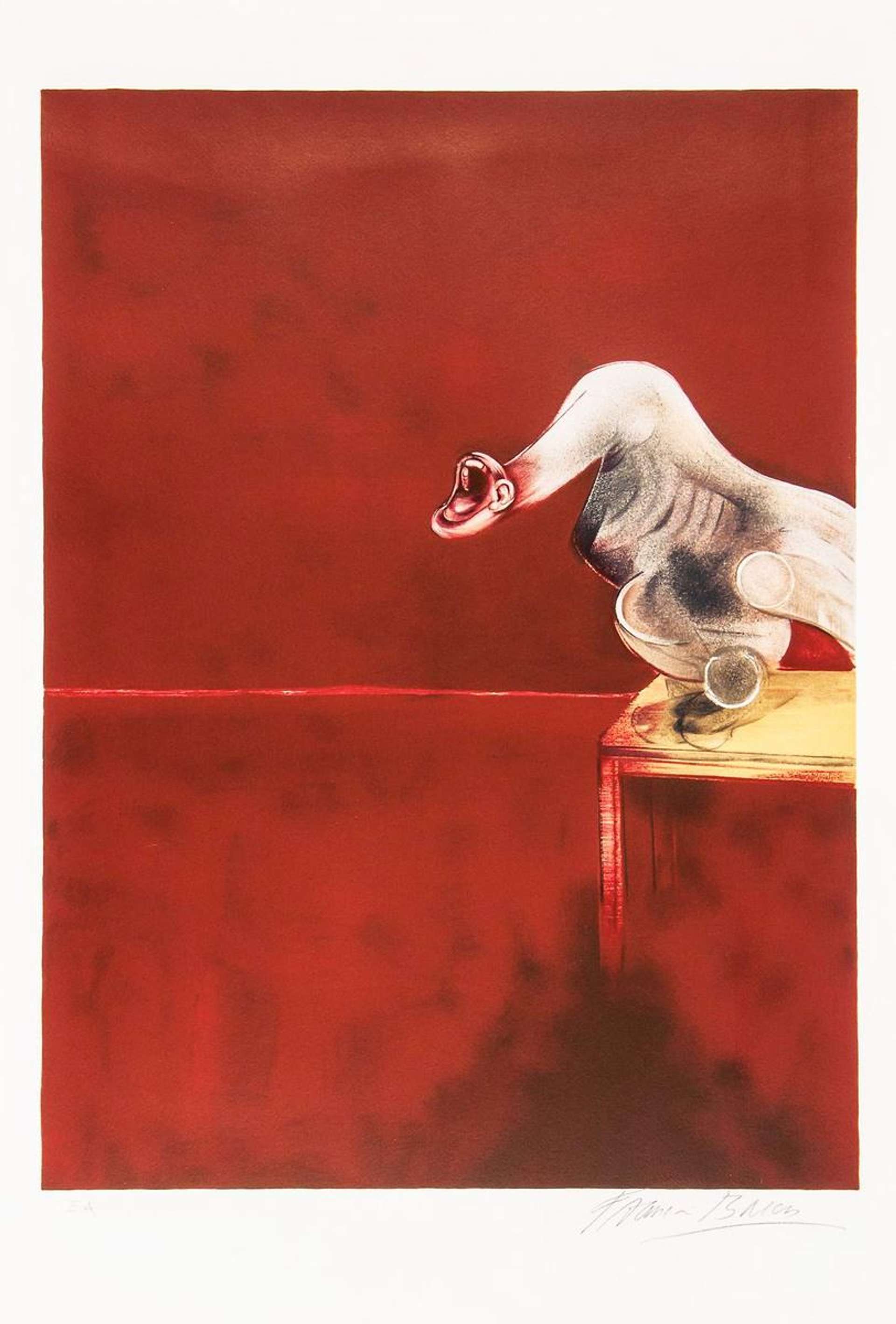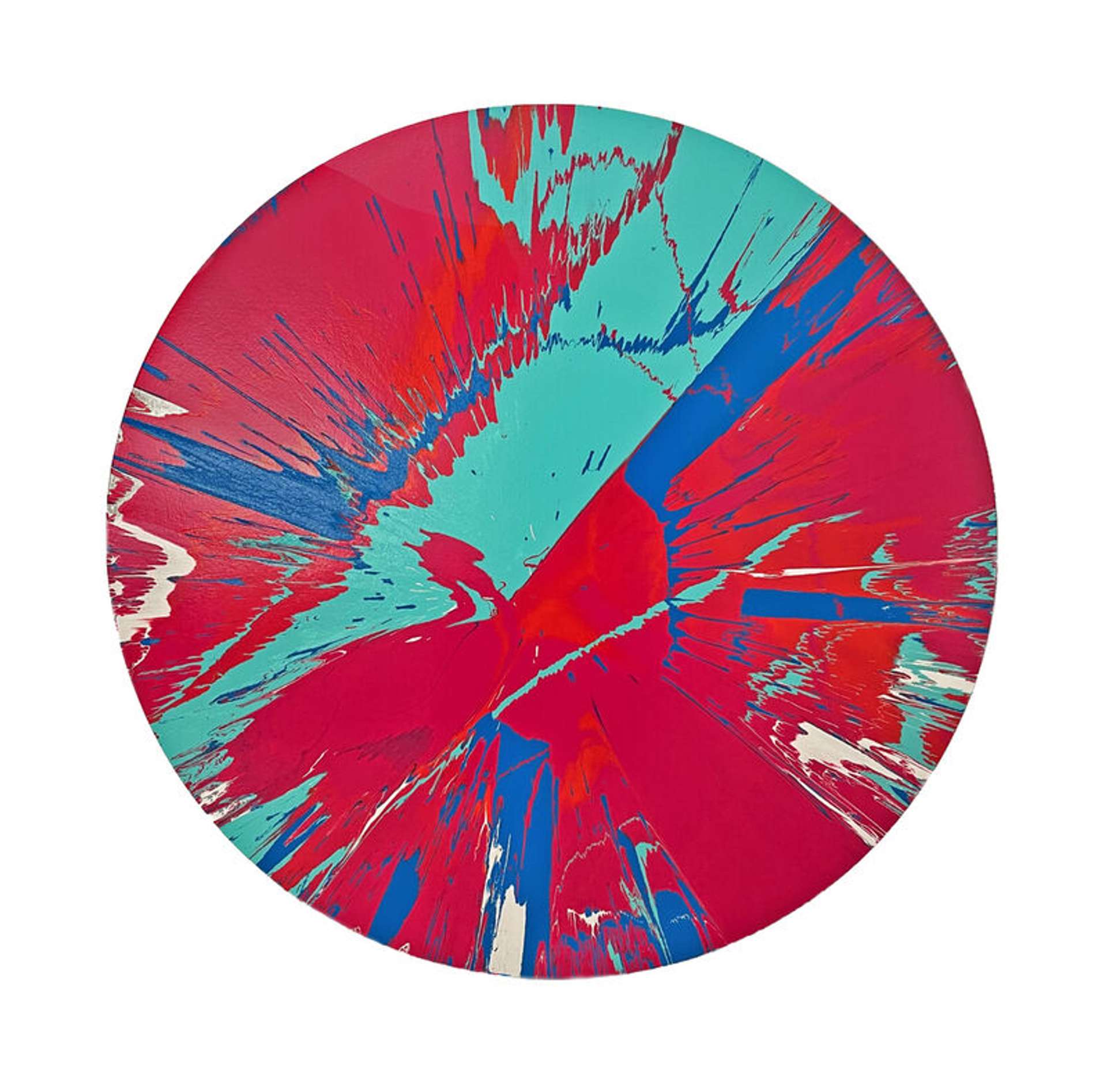Lucian Freud and Francis Bacon

 Image © National Portrait Gallery, London / Francis Bacon; Lucian Freud © Harry Diamond 1974
Image © National Portrait Gallery, London / Francis Bacon; Lucian Freud © Harry Diamond 1974Live TradingFloor
When two artists begin to blur the boundaries of their relationship, how does it manifest in their compositions? As masterful painters known for their raw and psychologically driven works, Freud and Bacon pushed each other to new heights while grappling with personal demons and the complex nature of their friendship. The pair shared a connection that transcended conventional camaraderie, evolving into a dynamic exchange of ideas, inspiration, and occasional animosity. Throughout their careers, their dialogue continued to unfold on the canvas, reflecting their influences on each other both professionally, and personally.
Who Was Francis Bacon?
Francis Bacon (1909-1992) was a highly influential and controversial British painter known for his distinctive and often disturbing art. Born in Dublin, Ireland, Bacon led a complicated life marked by personal struggles, artistic breakthroughs, and a relentless journey of exploring the depths of human existence through his work.
Bacon's artistic career began in the 1920s, but it wasn't until the 1940s and 50s that he garnered more recognition for his unique style. His paintings were characterised by his distorted and fragmented figures, often depicted in surreal, claustrophobic, and emotionally vexed settings. Bacon sought to expose the realities of our psyche, examining themes of isolation, anxiety, violence, and the frailty of existence.
Throughout his career, Bacon drew inspiration from a variety of sources, including classical art and literature. Old Masters like Pablo Picassso and Diego Velázquez influenced his work and elements of their techniques can be seen in his compositions.
Who Was Lucian Freud
Lucian Freud (1922-2011) came from a family with a strong artistic background, including his grandfather Sigmund Freud, the famous psychoanalyst. His journey took him from Germany to London, where he established himself as a prominent figure in the art scene.
Freud's style was marked by his interest in telling the truth of the human form. He became widely known for his depictions of the body, capturing both the physicality and vulnerability of his subjects. His paintings were characterised by their meticulous attention to detail, using thick brushstrokes and a limited colour palette to create an intense experience for the viewer. His works challenged traditional notions of beauty and aesthetics, offering a more honest and unfiltered portrayal of the body.
The Development of Bacon and Freud’s Friendship
Freud and Bacon first met in the 1940s through their mutual friend, Graham Sutherland. It is generally believed that they were introduced at a pub or art gathering in London. Their complicated friendship gradually developed over time as they found common ground in their artistic pursuits and shared interests in expressing the essence of the human experience. The pair spent an exceedingly amount of time with one another as Freud’s second wife claimed, that Bacon joined the couple for dinner, throughout the larger part of their marriage. The two artists spent plenty of leisure time with one another, indulging in their shared vices. Freud was struck by the emotive qualities of Bacon's paintings, finding an extraordinary power in the distortion and rawness of his figures.
Their friendship had a significant influence on each other's artistic development. Bacon's bold and expressive style challenged Freud to break away from traditional portraiture and explore new avenues of representation. Conversely, Freud inspired Bacon to further explore the psychological complexities of his subjects.
The Freudian Approach to Flesh: Lucian Freud’s Hyperrealistic Vision
Freud's process was rooted in acute observation and meticulous attention to detail. He approached his subjects with a commitment to capturing their body in its most genuine form. Through his perception, he revealed the individuality of each of his sitters, transcending surface appearances to convey an inner truth beneath the skin.
Central to Freud's oeuvre was his unparalleled mastery of flesh rendering. With an almost surgical precision, he employed layers of paint to recreate the texture, contours, and weight of human skin. His brushwork was both delicate and deliberate, mimicking the interplay of light and shadow on the body's surface. Every stroke was infused with a profound sense of purpose, as Freud built up the layers of paint, infusing them with an intense, hyperrealistic quality.
In his paintings, the human body becomes his vessel for storytelling. Each figure encapsulates a narrative, and the artist skillfully weaves layers of meaning through his depictions. Freud’s 1999 Benefits Supervisor Sleeping is a large-scale portrait of a plus-size, nude woman sleeping on a couch, fetched a record-breaking price at an auction and became one of Freud's most celebrated works. The body he paints is not smooth, but fleshy with curvature and texture. It’s not a rendition of a more preferred version of a woman’s body, just an honest visual account of one on full display.
Bacon’s Macabre Lens
Bacon's macabre perspective extends beyond the individual figure to encompass broader themes of violence, power, and the human condition. His imagery often evokes a sense of horror and unease, challenging our notions of comfort and stability. The figures in his paintings are often trapped, confined within their own existential prisons, with their faces distorted with agony and despair. Bacon's exploration of these themes serves as a reminder of the complexities and contradictions that shape our experience.
At first glance, the central figure in Study After Velázquez's Portrait Of Pope Innocent X appears to be a distorted rendition of Pope Innocent X, rendered in Bacon's signature brushstrokes and vivid colours. His crimson robes, typically associated with power and authority, now serve as a stark backdrop against which his anguished expression unfolds. Bacon's technique, characterised by his frenzied strokes and raw texture, leaves the painting with a visceral quality, amplifying the emotional impact of the subject matter. The Pope's face is contorted into a scream as Bacon strips away the sanctity traditionally associated with religious figures, exposing the vulnerability and frailty of even the most powerful individuals. The disfigurement of the Pope's features challenges the notion of identity and serves as a potent symbol for fragility.
Freud’s Influence on Bacon
Freud's hyper realistic approach to depicting flesh left a considerable impression on Bacon's work. In paintings such as Study Of The Human Body From A Drawing By Ingres, Bacon adopts a new rendition of the human form, capturing the vulnerability that Freud often conveyed in his own works. While the painting still employs Bacon’s approach of disfigurement, it’s done so in a way that honours and constructs the body in a way Freud would.
Freud's ability to convey intimacy and depth in his portraits inspired Bacon to explore similar themes. In Bacon's Portrait Of Isabel Rawsthorne Standing In A Street In Soho, the introspective gaze and emotional intensity conveyed in this work reflect Freud's influence on Bacon's approach to portraiture. The painting itself is fashioned after a photograph of the subject, Isabel Rawsthorne, standing outdoors. During this time in the 1960s, Freud and Bacon had spent a considerable amount of time together at this point, and it really shows here in Bacon’s work. Traditionally, we see Bacon’s brushstrokes in an organised frenzy across the face of his figures, but in this work, while the face is not necessarily pretty, it has a much more polished finish.
Bacon’s Influence on Freud
Bacon's distorted figures and contorted faces opened up new possibilities for Freud, inspiring him to push the boundaries of representation. Freud began to experiment with unconventional angles, perspectives, and distortions in his own work. Bacon's use of bold, expressive brushwork and his intense colour palette had a significant impact on Freud's technique. Freud adopted a more gestural and painterly style, employing thicker brushstrokes and rich, textured surfaces to convey a newfound presence of his subjects. This departure from his earlier, more controlled approach, added a new level of depth to Freud's work.
One key area of influence lies in Bacon's ability to deliver a physical manifestation of the darker, inner workings of the mind, and convey intense emotions through his visceral representations. This aspect resonated deeply with Freud, who, under Bacon's influence, began to explore the psychological dimensions of his subjects in a more heightened manner. In Freud’s self portrait Painter Working, Reflection we witness his expression that reflects a psychological intensity akin to Bacon's own works. In comparison to Freud’s earlier works whose sitters had a uniform composition to their skin, viewers can see in this later work a painting that still looks like Freud painted it, just with a hint of Bacon’s influence.
Self Portraits
Both Freud and Bacon approached the challenge of capturing each other's likeness with an exceptional understanding of their subject's personality and inner world. As close friends, they had a unique vantage point that allowed them to portray each other from an "outside looking in" perspective. This intimate relationship provided a level of trust and honesty that is often absent in formal portrait settings. Consequently, the portraits they created of one another can be seen as true reflections of the artists themselves.
One of Bacon’s most commercially successful works was a portrait of Freud. While viewers and collectors may be familiar with works like Study For Head Of Lucian Freud and Portrait Of Lucian Freud, it was Bacon’s 1964 Study For Portrait Of Lucian Freud that sold for over 43 million just last year in 2022. In all paintings, we have an opportunity to see Freud through the eyes of Bacon. Each piece depicts Freud in, of course, Bacon’s traditional style, but it’s worth noting that in every portrait, there is never a direct look at the subject–his face is always turned away. Do we think this was Bacon’s way of showing us how Freud was avoiding himself? Similarly, in his 1952 painting, Portrait of Francis Bacon, we get a direct, unavoidable close up of Bacon, however his gaze is pointed down, also looking away.
These portraits went beyond superficial representations of physical appearances; they went into the intricate nuances of their friendship and how each person presented themselves to the world versus to each other. They showcase the trust, understanding, and shared experiences that underpinned their friendship.Through their art, Freud and Bacon created revealing narratives that explored their connection and provided an unfiltered insight into their relationship and exchange.
An Unspoken Divide: The Role of Desire in Friendship
Desire is an important aspect to consider when examining the dynamics of their friendship and its eventual end. While it is difficult to determine the exact role their sexual orientations played in the dissolution of their relationship, it is plausible to explore the potential influence it may have had.
When Freud died, almost 20 years after Bacon, he was still holding on to the memory of his long-time companion. He kept Bacon’s Two Figures –a painting composed around ten years after their friendship began– framed and hung upon his bed. The painting depicts two nude men, enjoying each other’s company on their bed. He chose to preserve and prominently display Bacon's Two Figures within the intimate confines of his own bedroom. This captivating painting portrays two unclothed men, unapologetically revelling in each other's presence upon their shared bed. While this painting may serve as evidence of Freud’s interest in men, a larger detail worth considering is that perhaps, this was a double self-portrait of Freud and Bacon.
Homosexuality, particularly during the time when Freud and Bacon lived and worked, carried significant societal stigma and was often met with discrimination.
This shared experience of navigating a society that deemed their sexual orientations as taboo could have fostered a unique bond between them, allowing them to relate to each other's struggles and find solace in their friendship. Personal desires and attractions can sometimes blur the lines between friendship and romantic involvement. It is possible that their shared orientation and the complexity it brought to their lives could have contributed to a certain level of ambivalence or confusion within their friendship.
The Legacy of Their Bond
The legacy of the turbulent friendship and artistic exchange between Freud and Bacon remains a testament to the transformative power of human connection and creative dialogue. Their bond, marked by both admiration and rivalry, continues to captivate art enthusiasts and scholars alike. Freud and Bacon's friendship not only influenced their own artistic practices, but also inspired countless artists who came after them. Their willingness to challenge traditional norms and uncover the layers of human existence created new avenues of expression in figurative painting. Their legacy is one of fearless exploration, emotional intensity, and a relentless pursuit of truth in art.

















